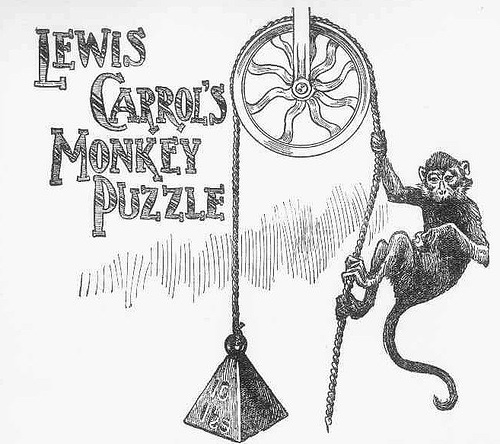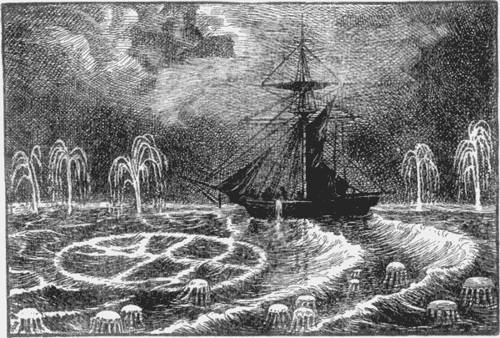
“Here is a quaintly told problem in mechanics, which, despite its apparent simplicity, is said to have caused Lewis Carroll considerable disquietude,” writes Sam Loyd in his Cyclopedia of 5000 Puzzles, Tricks, and Conundrums (1914). He quotes Carroll:
If, to a rope, passed over a loose pulley, is suspended a ten-pound counter weight, which balances exactly with a monkey eating an apple, swinging at the other end, what would be the result if the monkey attempts to climb the rope?
“It is very curious to note the different views taken by good mathematicians,” Carroll noted. “Price says the weight goes up with increasing velocity. Both Clifton and Harcourt maintain that the weight goes up at the same rate of speed as the monkey; while Sampson says that it goes down.”
So which is it? Be warned, Loyd’s thinking is inconclusive.




